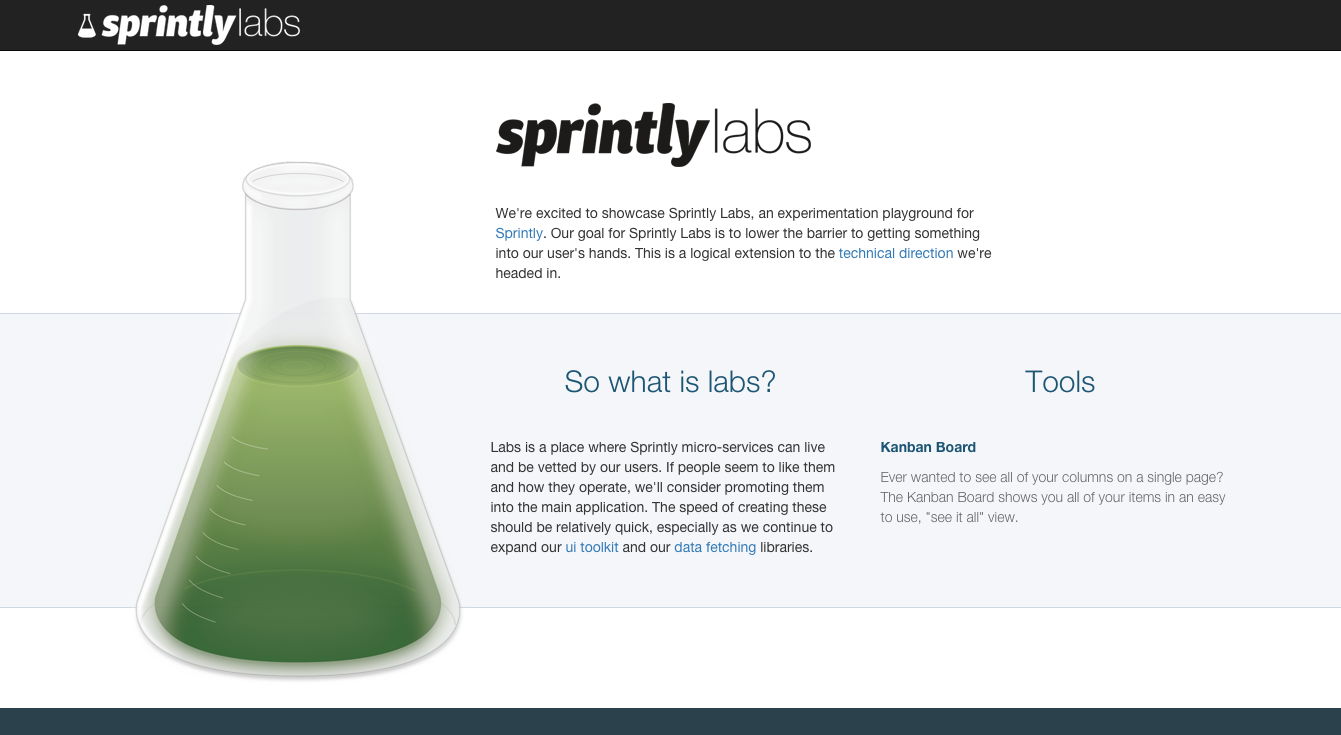
Today, I’m excited to announce Sprintly Labs, an experimentation playground for Sprintly. Our goal for Sprintly Labs is to lower the barrier to getting something into our users’ hands. This is a logical extension to the technical direction we’ve been heading in for the past few months.
So what is Labs?
Labs is a place where Sprintly micro-services can live and be vetted by our users. If people seem to like them and how they operate, we’ll consider promoting them into the main app. The speed of creating these should be relatively quick, especially as we continue to expand our ui toolkit and our data fetching library.
We’re tying each of these applications together using OAuth 2. We used OAuth 2 to power the “login with GitHub” and “login with Google Apps” buttons we launched late last year. Now, you can have a “login with Sprintly” button. As we vet this system, we’ll be opening this up to 3rd party application developers who want the ability to write deep Sprintly integrations.
Why create labs?
Labs was created to evoke a sense of experimentation and play within the Sprintly development cycle. Working on a large project often comes with inherent complexity as pieces interact with each other. By separating code, we make it easier to separate out the functionality of each piece. We’re also open sourcing our UI components as we go, which should democratize the creation of interfaces, so you can build your own special view into Sprintly.
Another benefit of this separation is it allows us to play with new ways of writing code. Maybe the future of Sprintly is in isomorphic rendering? Adding that to the whole app is a large endeavor. By having this in a smaller code base, we’re lowering our time investment and deferring the risk of blind alleys.
We’re pretty big fans of split testing here. One question might be, why not handle these changes with an A/B testing framework? A/B testing frameworks have the unfortunate side effect of splitting pathways through your code. As those familiar with branch analysis in code coverage know, this can make testing these things more difficult. Beyond that, A/B tests get complex as you layer them on top of one another. This can make code difficult to follow and more difficult to test, which no one wants.
What’s next?
We’ll be adding additional features and views into Sprintly data into labs in the coming months. Beyond that, we’ll be working on extending our OAuth setup to support 3rd party application development. If you’d like to write a Sprintly OAuth2 app, please let us know at support@sprint.ly. We’ll be looking for test partners as we begin that process.
You can visit Sprintly Labs here.

